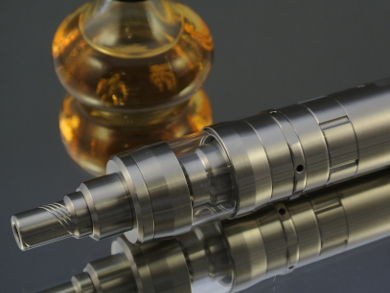Electronic cigarettes are becoming increasingly popular. These battery-powered devices that deliver nicotine in water vapor instead of by burning tobacco are marketed as a less harmful alternative to traditional cigarettes. However, little is known about substances produced and their potential harmful effects.
John P. Richie and colleagues, Pennsylvania State University, Hershey Pennsylvania, USA, used electron paramagnetic spectroscopy (EPR) using the spin-trap phenyl-N–tert-butylnitrone (PBN) to test for the presence of reactive, short-lived free radicals in e-cigarette aerosols. They detected high levels of the radicals in aerosols from all e-cigarettes and e-liquids tested. The levels were 1,000- to 100-times less than levels in regular cigarettes, but can be 10-fold greater than that from heavily air-polluted areas.
The researchers expect that the degree of damage might be less than from regular cigarettes. However, this depends on the identity and reactivity of the specific radicals produced. More data is needed to determine the potential harm from exposure to e-cigarette-generated radicals.
- Highly Reactive Free Radicals in Electronic Cigarette Aerosols,
Reema Goel, Erwann Durand, Neil Trushin, Bogdan Prokopczyk, Jonathan Foulds, Ryan J. Elias, John P. Richie,
Chem. Res. Toxicol. 2015, 28, 1675–1677.
DOI: 10.102/acs.chemrestox.5b00220




